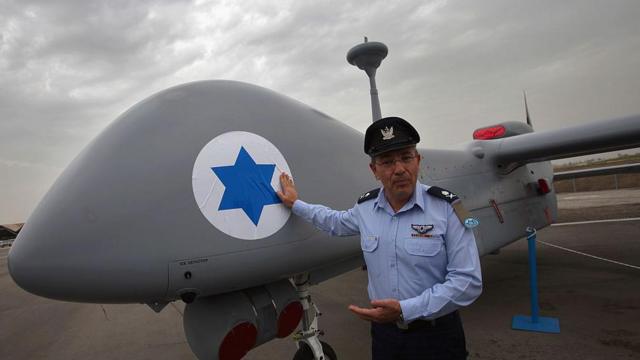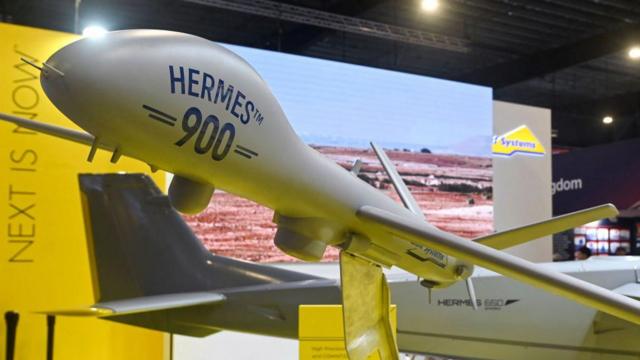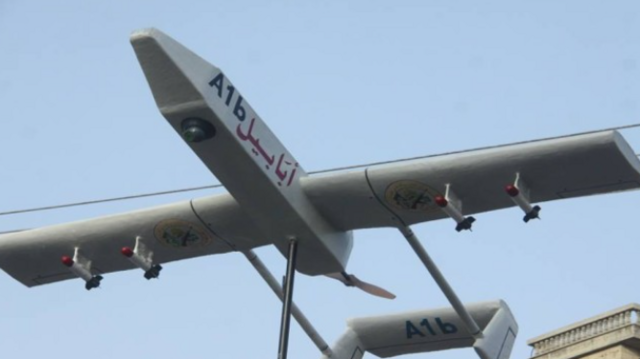
What is the "zanana" sound in Gaza's skies, and what does it have to do with psychological warfare?
Lina Shawabkeh
I remember an interview with Oprah Winfrey more than 15 years ago, during which she interviewed a woman in her fifties with an issue that I still remember because of its strangeness.
The woman had a constant buzzing sound in one of her ears, which she likened to the sound of a train. I still remember her perfectly, and I remember the fear in her eyes. She explained her struggle with this sound and how it was impossible for her to take care of her children and accomplish her tasks.
The condition this woman was suffering from is "tinnitus," which is caused by changes in how blood passes through blood vessels.
Those who live in Gaza today can understand what this woman went through. The sound of drones, which is almost never absent from the skies of Gaza, sounds very similar to the sound she was describing, which Gazans have coined "the sound of zanana" to describe.
What is Zanana?
What Palestinians call "zanana" are Israeli reconnaissance drones that are almost invisible to the naked eye, which are used to photograph and track various targets. Israeli forces have used them to carry out targeting operations inside the Gaza Strip, causing fatalities, according to Human Rights Watch, which said the Zanana was misused by the Israeli military.
The Zenana first appeared in the Israeli army in 1969, when it was used to take pictures of targets in Jordan and Egypt, and these pictures were used in the 1973 war. The aircraft also played a role in the 1982 invasion of Lebanon.
Among Israel's largest attack drones is the IAI Eitan, which can fly for up to 36 hours straight, at a speed of 370 kilometers per hour, and at an altitude of up to 45,000 feet.

The largest and most powerful version is believed to be the Hermes 900 drone, which was first used by the Israeli army in its 2014 war on Gaza and officially entered service in 2017. In the current war on Gaza, the Qassam Brigades announced that it had managed to shoot down one of these drones with an anti-aircraft missile east of Gaza City.

In 2005, Israel developed an airplane called the Heron, which has been sold to several countries around the world, including the United States and Brazil.
As for the "Kamam drone", designed by Israel in 2016 after it was developed to stay in the air for several days in a row, Israeli technology expert Meor Farid described it in one of his TV interviews by saying: "It is our eyes in Gaza." He explained that it can perform three tasks, namely: Providing information, directing forces in the field, and bombing or detonating.
These drones used by the Israeli army were reported by an independent website that specializes in publishing the military and defense capabilities of a number of countries, including Israel.
When we reached out to the Israeli military for comment on the drones Israel possesses, their effectiveness and how they are used, it replied, "No comment."
While there are many different types and functions, they all sound the same.
How do Gazans describe Al-Zanana?
Since the beginning of the war in Gaza, I've tried to reach out to as many Gazans as possible to get interviews or commentary on what's going on there. Almost every time I got on the phone with someone, I would ask them to go inside their homes or tents so I could hear their voices without the background humming. Some of them would laugh and say: "Even if you go inside the house, you'll hear it."
Shaaban, who is currently stuck in Rafah, told the BBC: "Israel flies more than 10 planes in each small residential block at very low altitudes and makes annoying sounds that cause psychological and nervous pressure, and we consider it a form of collective punishment, even children have difficulty sleeping because of the loudness of the sound."
"We feel like we are being watched and followed all day long. Recently, the Israeli army used these drones to fire bullets and shells at a woman for no reason, as if the targeting was at the whim of whoever was controlling her."
This "suffering" can also be seen on social media when you type the word "zanana" into X, where you will find comments throughout the day from Gazans complaining about her and her voice.

Image release,XCommentary on the image,Tweets from some X users about the "adulteress"
Psychological warfare - "torture without touching"
Military expert Brigadier General Hisham Jaber told the BBC, "The loud buzzing sound of drones causes confusion and is a source of stress for everyone who hears it, and is part of the psychological warfare that Israel is trying to practice against the people of Gaza."
The term "psychological warfare" was commonly used during World War II, and one of the first definitions of psychological warfare in the US military was "the use of any means to influence the morale and behavior of any group for a specific military purpose."
Some countries use "sound torture." The music is chosen to be loud or monotonous to the point of boredom. The music is chosen to be loud or monotonous to the point of boredom. The advantage of this type of torture is that it leaves no trace on the prisoner or the torturer, before he collapses completely without being able to claim that he was tortured (torture without touching).
Psychologist Dr. Fidaa Abu al-Khair told the BBC: "Scientifically, the sound made by the siren is considered one of the methods of torture, as it causes panic and fear in adults and children."
"The sound of the siren creates complex psychological issues, as it does not stop for many months, which can cause sudden panic attacks, bedwetting, and insomnia. The issues may appear in the future, not necessarily during the war, and may turn into what is known as post-traumatic stress disorder, a state of constant anxiety, a sense of insecurity that creates a negative mood, an expectation that the worst will always happen, as well as fear of the future and death."
Does Hamas Have "Zenana" Airplanes?
On February 26, 2003, the Izz ad-Din al-Qassam Brigades, the military wing of Hamas, made the first official announcement of the production of combat drones.
At the time, the Qassam Brigades mourned the death of Nidal Farhat and five of his comrades, who were killed in a planned assassination operation, according to the brigades' statement, as Israeli intelligence booby-trapped parts of an airplane they were working on.
Nearly two years after his death, in 2005, Hamas's Department of Military Action Abroad launched the "drones" project and began active steps on the ground to develop the first prototypes, which were led by a Tunisian engineer, Mohammed Zouari, and a Gazan engineer, Mahmoud Fares.
By 2008, Zouari and his team were able to produce 30 drones for al-Qassam Brigades, dubbed Ababil.

In 2014, specifically in the war that was dubbed "Asaf al-Maqoul", the Qassam Brigades launched the Ababil 1 drone, which flew over the Ministry of War in Tel Aviv to take several photos and published some of them, while saying that it kept the bulk of them due to the "vitality of the photos," as the Qassam Brigades put it at the time.
Since October 7, a war has been ongoing in the Gaza Strip in response to a Hamas attack on Israeli towns in the Gaza envelope region. Israeli authorities say that 1,200 people were killed during that attack, while the Ministry of Health in Gaza says that more than 34,000 Palestinians have been killed in the Gaza Strip over the past half a year.
(Source: BBC)








